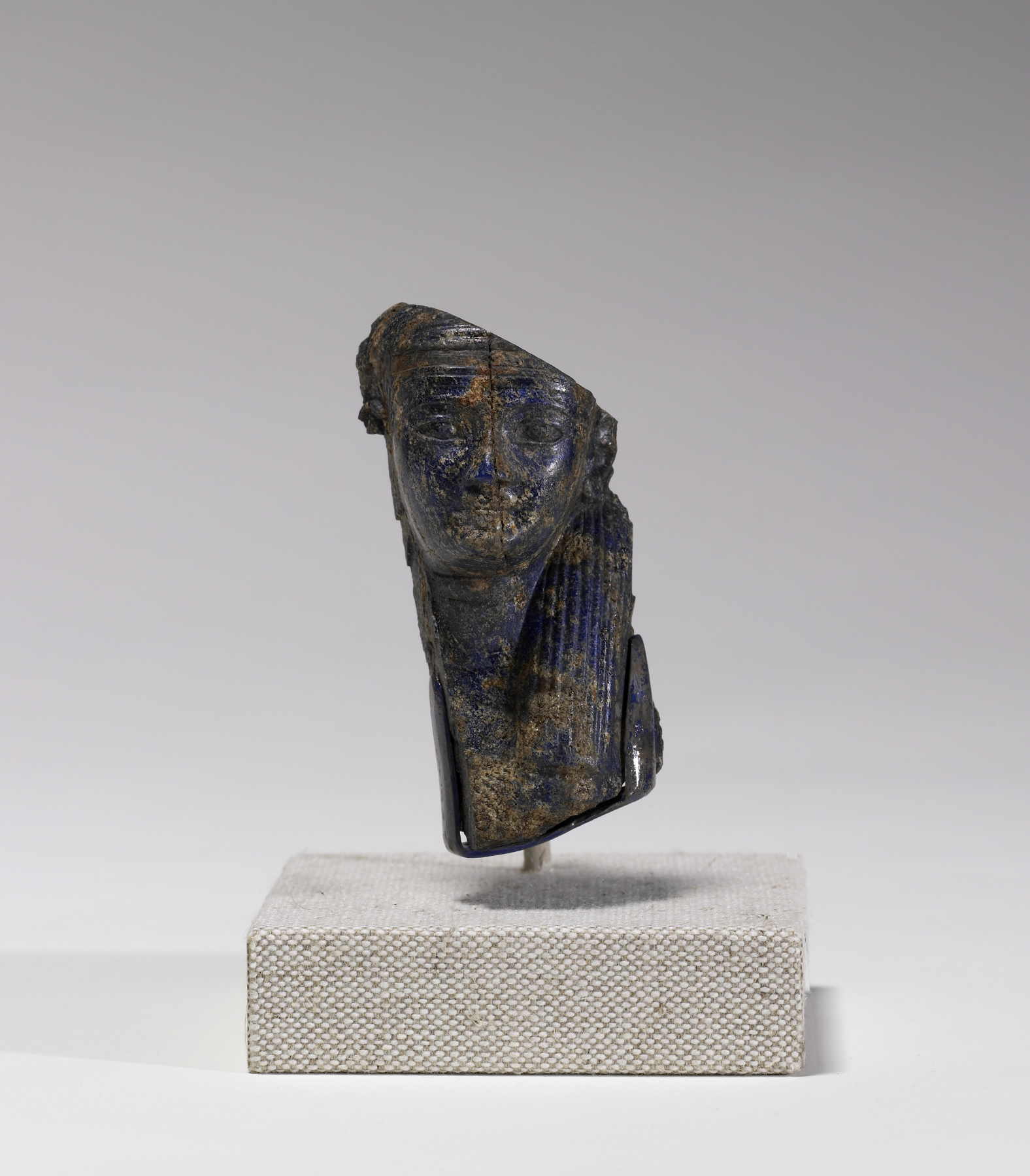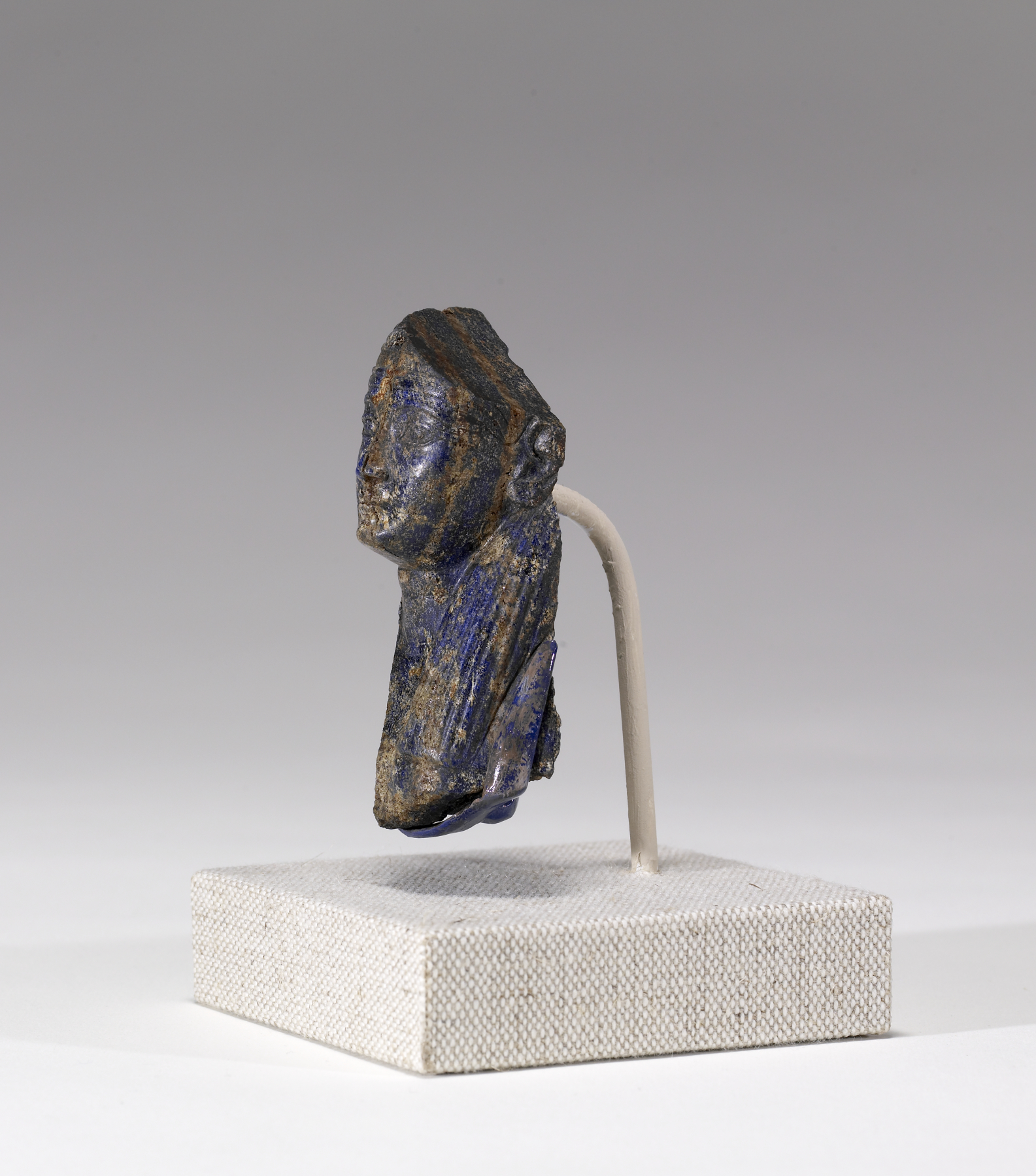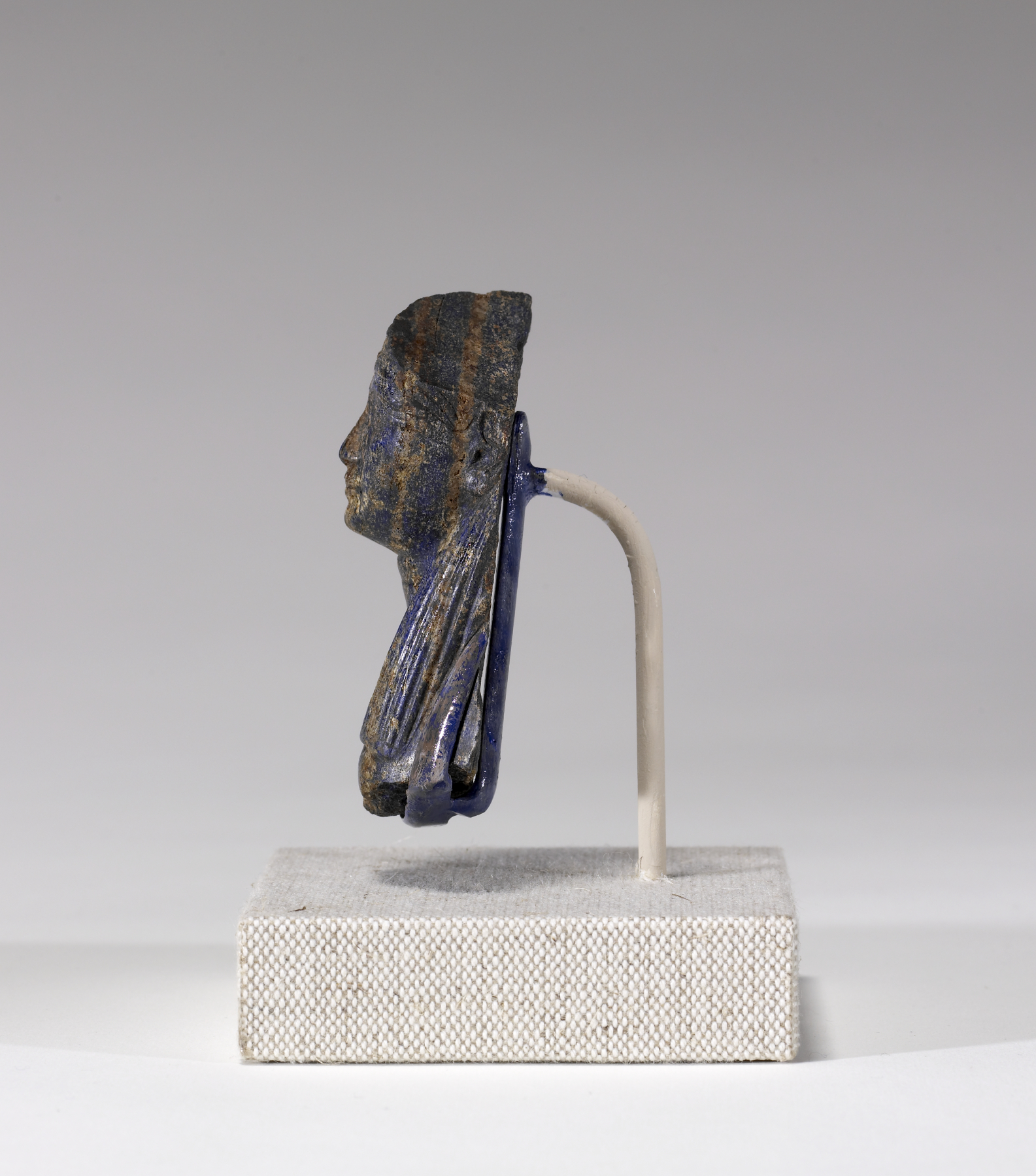Fragment of a Goddess
(Ancient Egypt and Nubia )
Egyptians prized lapis lazuli, acquired through trade with Afghanistan, for use in jewelry and small sculpture. This small fragment of a statuette most likely represents a goddess, possibly Maat, the goddess of order and justice. Her face and long wig are well preserved.
Provenance
Provenance (from the French provenir, 'to come from/forth') is the chronology of the ownership, custody, or location of a historical object. Learn more about provenance at the Walters.
Henry Walters, Baltimore, 1924 [mode of acquisition unknown]; Walters Art Museum, 1931, by bequest.
Conservation
| Date | Description | Narrative |
|---|---|---|
| Examination | technical study | |
| 1/1/1998 | Treatment | cleaned |
| 1/1/1998 | Treatment | cleaned; loss compensation |
| 7/7/1998 | Treatment | cleaned; technical study |
| 7/10/1998 | Examination | technical study; cleaned |
| 8/6/1998 | Examination | survey |
Geographies
Egypt (Place of Origin)
Measurements
3 3/16 x 1 7/8 x 1 in. (8 x 4.7 x 2.5 cm)
Credit Line
Acquired by Henry Walters, 1924
Location in Museum
Accession Number
In libraries, galleries, museums, and archives, an accession number is a unique identifier assigned to each object in the collection.
In libraries, galleries, museums, and archives, an accession number is a unique identifier assigned to each object in the collection.
22.352








